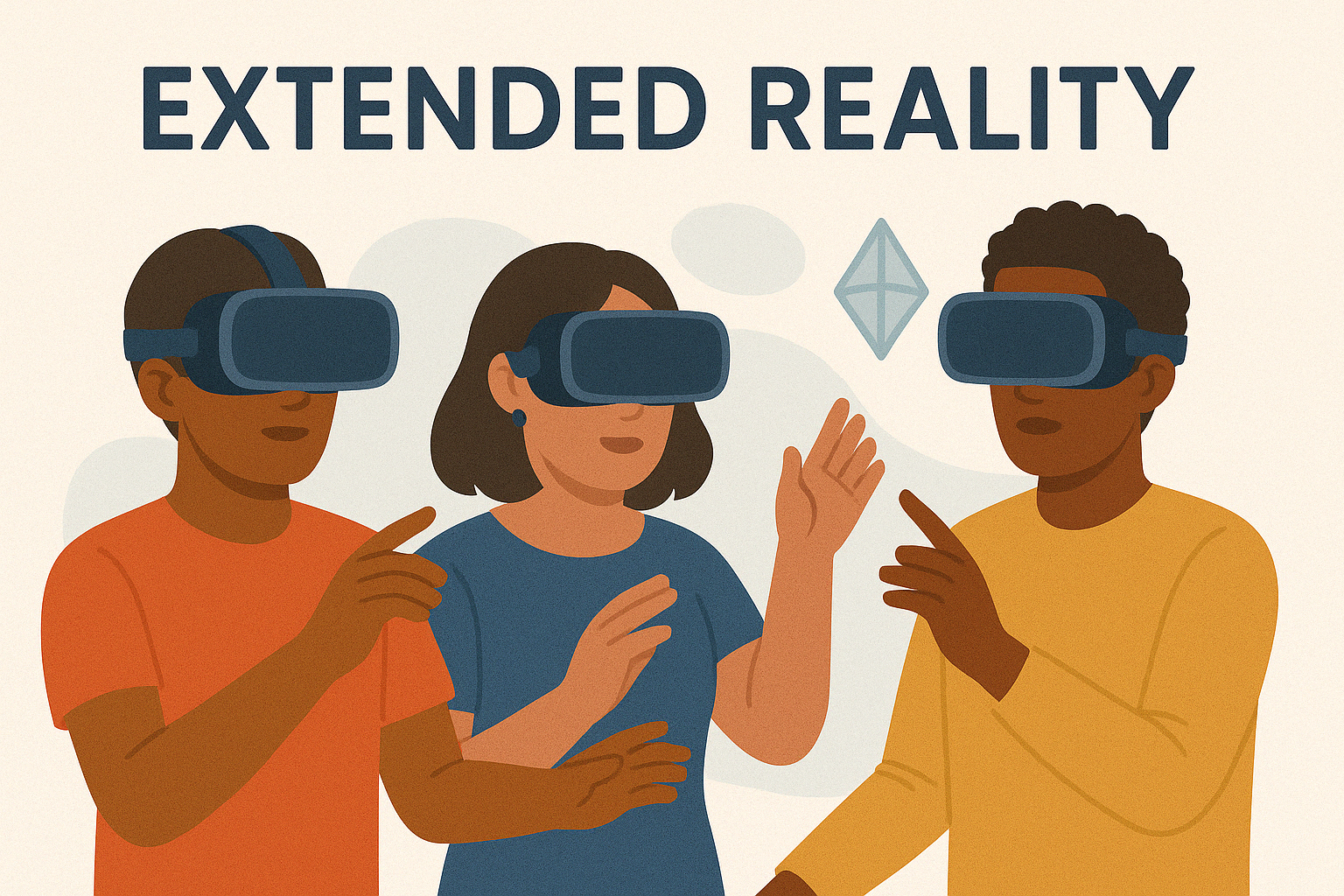
What Is XR (Extended Reality)? – A Simple Guide for Businesses & Creatives
In the ever-evolving landscape of technology, a new wave of innovation is redefining how we interact with digital content: Extended Reality (XR). If you’re a business leader or creative professional looking to understand the future of engagement, collaboration, and storytelling, this guide is for you.
What Is XR?
XR, or Extended Reality, is an umbrella term that encompasses three primary immersive technologies:
Together, these technologies form XR – an all-encompassing term for real-and-virtual combined environments and human-machine interactions generated by computer technology.
Why Businesses Should Care About XR
Extended Reality isn’t just a cool gadget trick; it’s a powerful tool that can give your business a competitive edge.
AR and VR offer highly engaging experiences that can help brands stand out. Imagine allowing customers to virtually try on clothes, walk through a new home, or interact with a 3D product demo. XR increases interaction time and brand recall.
With global teams becoming the norm, XR allows people to meet, design, and collaborate in 3D virtual environments. Platforms like Spatial and Engage XR make remote meetings feel more like in-person interactions – boosting communication, creativity, and productivity.
Industries like healthcare, manufacturing, aviation, and defense are using VR and MR to provide hands-on training without risk. XR simulations replicate complex scenarios, allowing for safe, effective skill-building.
From immersive product launches to interactive pop-up experiences, XR adds a wow factor that traditional marketing struggles to match. XR enables storytelling that places the user inside the experience.
XR for Creative Professionals
Creatives are finding XR to be an expansive medium that breaks traditional boundaries.
Writers, filmmakers, and artists are experimenting with XR to create narratives that unfold in 360 degrees. Storytelling becomes spatial, nonlinear, and interactive, giving audiences agency in the experience.
XR allows for creation of digital sculptures, virtual exhibitions, and interactive installations. These can be monetised via NFTs, gallery spaces in the metaverse, or commissioned work.
Roles like XR designer, technical artist, VR sound engineer, and 3D animator are increasingly in demand. Freelance creatives can now work globally on games, experiences, training content, and marketing campaigns.
Real-World Use Cases
To better understand XR’s impact, let’s explore some real-world applications:
Getting Started with XR
Whether you’re a business owner or a creative looking to dive in, here are a few steps to begin:
Common Myths About XR
“It’s too expensive.” XR development has become more accessible, and small projects can be launched on reasonable budgets.
“No one uses XR yet.” Over 171 million people globally use VR/AR today. Adoption is growing rapidly, especially in gaming, retail, and training.
“It’s just for gaming.” While XR originated in gaming, it’s now critical in industries ranging from real estate to healthcare.
XR is no longer emerging – it’s here. And it’s transforming how we work, play, learn, and create. For businesses, XR can unlock deeper engagement and new efficiencies. For creatives, it’s a playground of limitless possibility.
Whether you’re just beginning to explore immersive technology or ready to hire your first XR freelancer, now is the time to lean into the future. Extended Reality is extending what’s possible.
Looking to launch an XR project or hire immersive tech talent? Explore our XR marketplace post opportunties and connect with top freelancers ready to bring your vision to life.